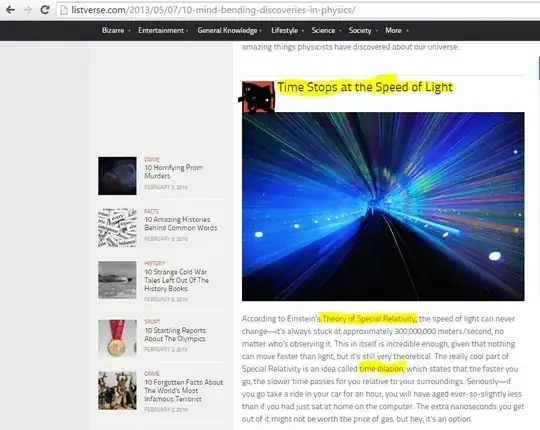According to the "list verse" time gets to a pause when someone or something travels at the speed of light. But a question still lies in my mind, if time always travels forward and does not stop at any point then how come it gets to a pause with respect to a body travelling at speed of light?
1 Answers
In physics, frames moving at the speed of light are not valid. What "list verse" means, more accurately, is that as you approach the speed of light, your time, as seen by a "stationary" observer, ticks slower. This is a well-documented effect that needs to be accounted for in all manner of applications, ranging from particle accelerators to GPS satellites (general relativity - how time and space respond to gravity and acceleration - is also accounted for here).
Here's a brief overview of how to obtain this result. Let's introduce the concept of a frame, which is simply a set of space and time coordinates following an object. If you are standing still on the ground, your frame is given by the set of space around you ("this point is 5m away from me"), and the way time passes for you ("this event happened 4 seconds in the past"). If you are moving slowly, a point in your frame 5 meters away from you will be $5 + v (t-t_0)$ meters away from the "stationary frame", where $v$ represents your velocity, and $t-t_0$ is the time that has passed since the moving frame passed the original frame. An "inertial frame" is simply a frame moving at a constant velocity (so a rocket ship moving without acceleration through space, but not a rocket ship that is taking off from the Earth). Special relativity deals mostly with inertial frames, and to understand time dilation, that's all you need to know.
Having introduced the idea of a frame, the two postulates of relativity are (paraphrased):
- Physics behaves the same in all inertial frames.
- Light moves at a speed, $c$, that is independent of the source or the observer.
The first postulate means that there is no "special frame" where physics behaves differently. If you perform an experiment in the US, an identical experiment should give the same results in the UK, or on a stationary spaceship 10 lightyears away, or one that is moving at 99% the speed of light away from Earth. Note that the experiment performed on the moving spaceship will look the same to observers in the spaceship, but may look differently to an observer the spaceship is moving quickly past. (For example, a vertically moving ball on the spaceship will look to be moving vertically and to the right if the spaceship passes you from left to right.) This one is pretty straightforward.
The second postulate might be a little more difficult to convince yourself of, but I'd suggest looking up some other answers on this topic. For now, take it as a given if you don't yet understand it.
Given these two axioms, here is a thought experiment showing how time dilation can arise. Consider a flashlight on a train that bounces off a mirror a distance $d$ away from the light, as shown.
http://hendrix2.uoregon.edu/~imamura/FPS/images/time_dilation.gif
When the train is stationary, it takes $t=\frac{2 d}{c}$ seconds for the light to bounce back to the flashlight. Now consider the case when the train is moving very quickly (some considerable fraction of $c$). Since an experiment behaves the same in all frames, we see the same result - $t=\frac{2 d}{c}$. However, from an outside frame, since the speed of light is the same in that frame too, we see that in order for the light to get back to the flashlight, it must travel a distance of $\sqrt{(2d)^2 + (v t)^2}=c\cdot t$. Solving this for $t$ gives us:
$$ t = \frac{1}{c}\cdot\sqrt{(2d)^2 + (v t)^2} t = \frac{2d}{c} \cdot \frac{1}{1-\frac{v^2}{c^2}} $$
The factor of $\frac{1}{1-\frac{v^2}{c^2}}$ is called $\gamma$, and is the time dilation factor (in that dilated time runs slow at a rate of $\frac{1}{\gamma}$). You can see that as you get faster and faster, $v\rightarrow c$, so $\gamma \rightarrow \infty$ and $\frac{1}{\gamma}\rightarrow 0$.
So what list verse means by "time stops at the speed of light" is that if you get arbitrarily close to the speed of light, time ticks arbitrarily slowly by a factor of $1-\frac{v^2}{c^2}$. It's not valid to make this comparison to photons, since photons (and all massless particles) must travel exactly at the speed of light (in whatever medium they are traveling in). It is impossible for them to travel any faster or slower than $c$, and it is impossible for any object with mass ("massive object"), such as quarks, atoms, or people, to travel at the speed of light.
- 451
